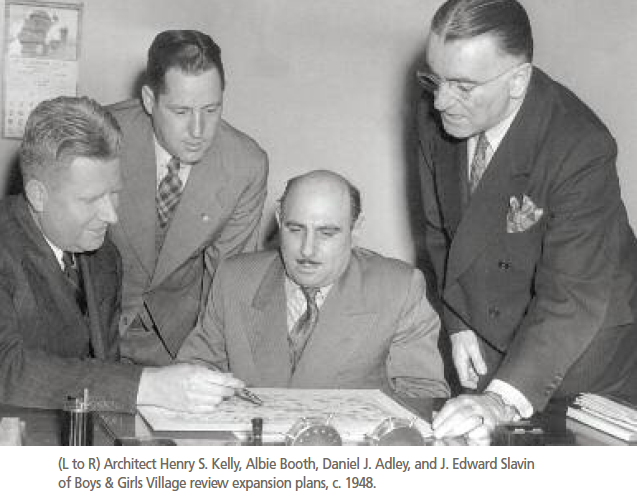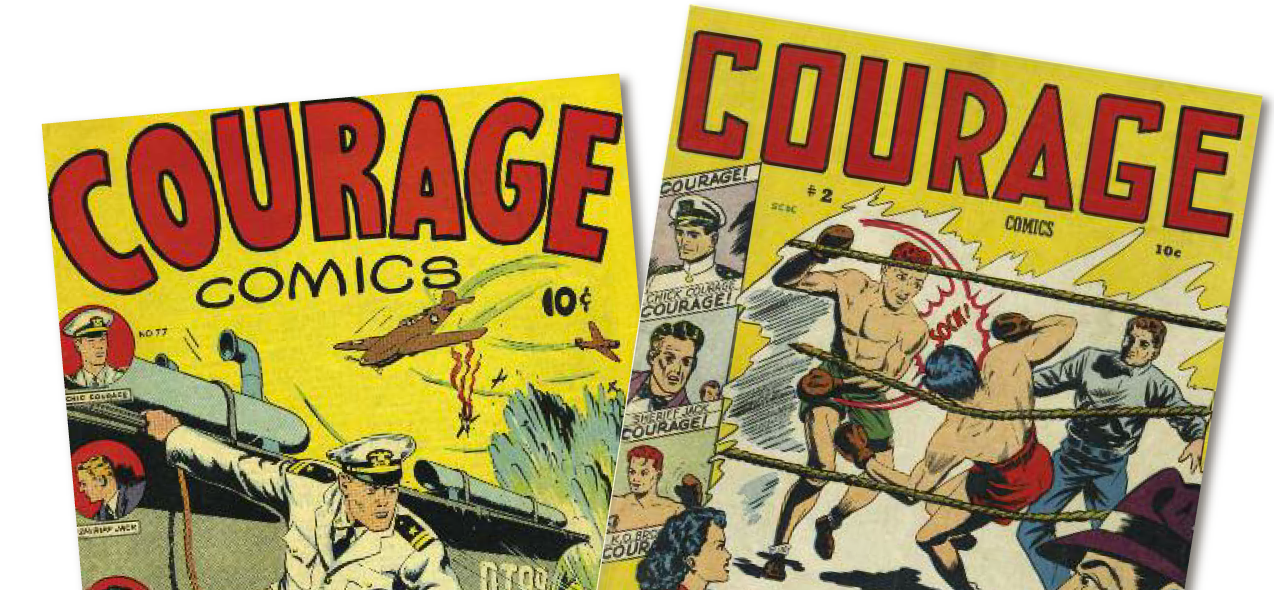History
For over three decades, from 1934 to 1972, New Haven’s J. Edward Slavin was bent on deterring youth at risk from a life of crime. Slavin envisioned a home where troubled boys could live, work, and learn as a way to redirect their energies away from a life of crime. He drew inspiration from the success of a residential program in Nebraska founded by Father Edward J. Flanagan in 1917 which would grow into a fully functioning community known as Boys Town.
 Serving as the first president of Boys Village, his version of Boys Town, Slavin surrounded himself with people who could help fulfill his dream. The board of directors was composed of successful men from diverse fields, including William F. Hayes, former chief jailer for New Haven County, as vice president, Yale football legend Albert “Albie” Booth as treasurer, and home builder Peter Juliano as secretary. Other members of the board included Stanley Komykowski, a prominent 4-H member who worked for the U.S. Department of Agriculture, and trucking company magnate and former New Haven Police Commissioner Daniel J. Adley.
Serving as the first president of Boys Village, his version of Boys Town, Slavin surrounded himself with people who could help fulfill his dream. The board of directors was composed of successful men from diverse fields, including William F. Hayes, former chief jailer for New Haven County, as vice president, Yale football legend Albert “Albie” Booth as treasurer, and home builder Peter Juliano as secretary. Other members of the board included Stanley Komykowski, a prominent 4-H member who worked for the U.S. Department of Agriculture, and trucking company magnate and former New Haven Police Commissioner Daniel J. Adley.
In 1941 Slavin and his associates acquired 82 acres off Wheelers Farms Road in Milford. Boys Village was established the following year, and its doors opened in 1944. It initially operated as a summer camp and became a year-round facility in 1947. With a 14-room farmhouse, small cottage, cornfield, potato patch, dairy barn, and poultry buildings, it was originally designed to accommodate 16 boys who were 10 years old and older.
Patterned after a New England village, it offered communal living, educational and training facilities for industry and farming, and a psychological clinic. The boys grew most of the food they ate and were responsible for performing chores around the facility. In 1948 the board of directors made plans to accommodate a total of 31 boys.
“I really believe all boys have good in them if they are shown the right way. I always believed that if you keep a boy busy he won’t get into trouble. I’m not interested in how much it costs to grow a boy. I’m interested in what kind of boy he’ll make.” - J. Edward Slavin
Slavin’s strategies to reach young people early—beginning with his radio show and First Offender Club—were visionary. He expanded his reach with a screenplay for a film called First Offenders, produced in 1939, with the tagline, “Stop turning kids without a chance into men without hope!” The movie, released nationally by Columbia Pictures, was directed by Frank McDonald and starred Walter Abel and Beverly Roberts. Slavin also published several comic books in 1945 under the banner Courage Comics and the auspices of Boys Village. The theme of the stories was courage in the face of adversity; the comics featured scenarios relating to crime, athletics, and heroism in World War II.
Read more on the formative years of the Boys & Girls Village
Expanding to include girls
Over the years, Boys Village has continued to seek ways to serve children with emotional and behavioral needs.
- In 1983, the Day School first opened its doors to boys and girls who were between the ages of 6-15 and needed a more specialized and individualized educational setting.
- In the 1990s, the agency added adoption, therapeutic foster care and family support services for all members of the family. The agency expanded its service areas into New Haven in 1995 and Bridgeport in 1996.
- In the late 1990s, the Kids I.N.N. (Intensive Needs Network) and Safe Haven safe home were created for boys and girls.
- In 2002, during its 60th year of service, the agency officially adopted Boys & Girls Village as its name.
- In 2011, BGV’s first woman board chair was elected.
- In 2014, the Safe Haven safe home was repurposed into a residential treatment program for boys with problem sexual behavior.
- In 2014, the 13,000 square foot Bridgeport office underwent a renovation to create a more flexible open environment. This change allowed the site to be more family friendly, enhance the flow of communication across programs, and reflect the open and transparent approach to care we believe is essential to quality driven services.
- In 2015, our Work to Learn program started. The program is designed to provide educational and vocational services to assist youth to successfully transition into adulthood.
- In 2017, thanks to generous support from the State and private donors, BGV broke ground on a new program administration building and an expansion to the Upper School in Milford.
- The end of 2019 and beginning of 2020 was big for us! We proudly appointed our first female President & CEO. Additionally, we opened our Norwalk office. March 2020, we swiftly responded to the growing COVID-19 pandemic by making and delivering meals, dispatching laptops to students, and more. That same year, we excitedly opened our new Vocational Building. The course curriculum is designed to give students heads-on learning in computer programming, modern manufacturing, automotive repair, and culinary arts.
- In 2022, we started our Youth Link Mentoring (LINK) Program for LGBTQIA individuals. We opened two Quality Parenting Centers for supervised, safe spaces for children and parents to bond. Additionally, we started the Short Term Assessment & Respite home for boys that includes trauma treatment with family engagement.
- In 2022, BGV proudly celebrates our 80th Anniversary and 80 years of innovative care.
- In 2023, KRAFT HOUSE a Psychiatric Residential Treatment Facility (PRTF) was opened on Boys & Girls Village’s Milford campus. This 12-bed program will serve boys ages 11-17 who require a step down or alternative option to an inpatient psychiatric hospital.
As a leader in specialized care and education for the emotionally troubled youngster, Boys & Girls Village is committed to continuing the tradition begun by our founders of providing warmth, guidance, and life-training for children at risk of being forgotten.

